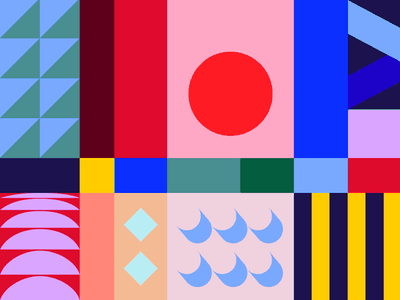A tapestry is a work of art, made by weaving together different stitched panels. The style and type of fabric used, as well as its color and backing, are determined by the weaving design used. There are many techniques used to create tapestries and each technique has its own name. Some of these are discussed here.

Weaving
A woven panel may be started with a single needle called a peg, which is threaded through the fabric on both sides. The inside of the panel is then worked by passing through the needle and back over the peg several times so that the panel is turned inside-out. While the procedure is repeated, the weaver keeps working with the inside of the panel until the design is complete, usually on one side only.
Weaving Embroidery (or weft threads) are used to stitch the fabric to the peg and the lining fabric. In basic styles of tapestry production, a single weft thread is usually fastened to the peg and the other to the lining. Other types of weaving design involve alternating the fastener and the thread, to produce a more sturdy weave structure.
Weaving Design and Technique
Weaving techniques are divided into three main categories based on the way the fabric is assembled. These include loose-weave (or looser weave), tightly woven (or bulky weave), and fixed-weave (or fixed warp). Loose weaves have very open weft threads, creating a more loosely constructed panel. Bulky weaves have a tightly packed weft thread, resulting in very sturdy panels. And fixed warp panels are basically a repeat of the previous panel but without the loose weft threads.
Weaving Techniques
The main components of a weaving design are the materials, which are woven into the panels. There are several different kinds of fabrics. These are canvas, cotton, polyester, rayon, and satin. Tencel and silk are also used, as they have special qualities and properties. Other materials that are commonly used are wool, silk, wool mixed with cotton, nylon, and Georgette.
Basic Weaving Techniques
A typical panel consists of four panels, two for the warp side and one for the receiving side. Each panel consists of four yarns. Two yarns are located in the front of the panel, while two yarns are located at the back. These 4 yarns are joined together with yarn glue, which is also referred to as grommets. This technique is called a flat weave.
Flat Weave Rowing
The flat weave technique results in a tightly packed panel, with straight lines. It is a simple process, and the result is often called a tight weft. It is also a slow process because when weaves start weaving, there are so many yarns that need to be tied together tightly. In order to achieve this tightness, the wefts are often wound tightly around the frame.
Vertical Weave
Most modern vertical weaves are crosswise weaved. They are made by putting the first panel onto the needle and passing yarn back and forth between the needle and the remaining panels. The yarns are threaded onto the needle, where they are gently guided along with the frame by the weft. The yarns move along the frame under tension. When the needle is released, the yarn comes free and the tension is released. This allows the next panel to be woven using the same tension, as the previous panel was.
Long diagonal weave
The long diagonal weave starts with the needle and yarn firmly tied at both ends. The yarn is then pulled through the frame onto the next row and then the pattern is repeated. To make the design more interesting, you may use a wide size frame to create a diagonal weave that looks like a zigzag. Once you have completed your long diagonal weave, it is best to pin the frame together before you start weaving the next panel. The frame can be easily removed after the weaving is complete.
Woven Weaves
If you are looking for a very simple way to create a simple but eye-catching piece of clothing, consider using woven slits instead of a single colored yarn. These slits are the same width as the single yarn, and thus, once the two yarns are tied, they form a continuous woven weave. In order to make a woven slit, you will need two colors of yarn, a metal or wooden frame, and a sewing machine. Once you have all of these items together, you simply thread one end of each yarn through the frame, leaving two-inch pieces on the other side. You then take the two-inch pieces of yarn and put them onto the sewing machine’s needle.
This weaving technique is called the rya. The rya is basically a Japanese word that stands for “three warp threads”. When you use the rya, you will start by passing one end of the yarn through the frame. The yarn will then be drawn through the needle onto the next row. It will be wrapped three times around the frame, and the three wraps will be pushed back into the frame so that there are two loops on the inside of the frame. Instead of finishing the frame in a typical knot, the rya is “pulled through” several times so that the entire thing ends up as one tight wrap.

